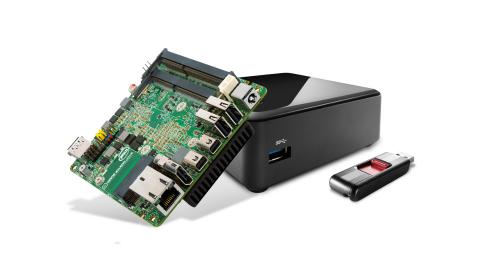After taking the PowerCli HOL from VMware, I been thinking of putting together a home lab. I been reading a lot of information about
others bloggers using Mini PCs- such as the Intel NUCs, Mac Minis, and even custom built whitebox servers. Unfortunately, being a father of 3 kids means I have to be on a tight budget, and at the same time I don’t want to skimp and have a under powered home lab. I would also like the equipment to be quiet and fan-less if at all possible.
During my research about the ideal PCs used for the home lab, I’ve found the most important piece- using Intel vPro technology. This adds a virtual KVM into the system so it can be completely headless. With these facts in mind, I’m leaning towards the Intel NUC NUC5i5MYHE. Not only does this model have the Intel vPro technology, but it packs an i5, expandable memory to 16 GB, and room for a SATA3 drive.

Now that I have a rough idea for the host(s), I need to think about the storage. I don’t have the funds for the NAS that I should be using, so I’m looking to use vSAN. By using the NUCs with the extra height, I’ll be able to fit a drive in it as long as the thickness doesn’t exceed 9.5mm. This will be a good option until I have the ability to get a NAS. When I do get the NAS, it would at least need to be a 5 bay so I could run a RAID 10 with a hot spare. Since I’m looking to use vSAN, I’m going to run the ESXi software from an USB drive. The ideal candidate would be the SanDisk Ultra Fit, since it has such a small profile, and would not be in danger of getting broken off in the USB port.
Specs for Home Lab
ESXi Host
- Intel NUC Kit BLKNUC5I5MYHE
- Seagate 1TB Gaming SSHD SATA
- Crucial 32GB Kit (16GBx2) DDR3L
- Ultra Fit 32GB USB 3.0 Flash Drive
OPTIONAL Hardware
- Synology Disk Station 5-Bay Network Attached Storage (DS1515+)
- WD Red Pro 3TB NAS Hard Disk Drive
- Crucial 16GB Kit
With this home lab I would be able to work out more complex scripts that I wouldn’t normally want to do at the office. My isolated sandbox will also offer the flexibilty to test out vSAN, and configure and test other features that I’m currently not using in my work environment.
– Stuart

use crucial 16GB x 2 DDR3 SODIMMs for 32GB in 5i5MYHE!
V,
I most have missed that part on the 5i5MYHE. I been researching like a crazy man on this project. I just checked the Intel spec sheet (http://www.intel.com/content/www/us/en/nuc/nuc-kit-nuc5i5myhe-board-nuc5i5mybe.html) shows that it has a limit of 16GB.
I’m not sure I understand the recommended list for hardware. The NUC listed uses DDR3L memory, but the memory listed is DDR4?
My 5i3RYH also shows a limit of 16GB, but it does work fine with the crucial 32GB kit (again, the 32GB DDR3L kit). I left it running overnight with memtest86 just to be sure.
The 6th-gen NUCs, like the 6i5SYH, officially support 32GB of ram. DDR4 memory is a lot cheaper than DDR3L (~$205 for 32GB DDR4 versus ~$320 for 32GB DDR3L), so I’d lean towards get a 6i5 if I was in your shoes and wanted the extra memory.
Reid,
I had a parts list for each model of the Intel NUCs that I was looking at. I must have just copied the wrong memory when I wrote the post, so thank you for noting that. 🙂
That is some good information to know with the newer NUC supporting more ram that advertised.
-Stuart
Yes, the specs say 16GB, however the memory controller and BIOS supports 32GB. I am using it with 32GB for many months without an issue. And now that USB 3.0 is finally working in ESXi 6 with both external HDs and NICs, I’m ready to buy another one.
Also a note about vPro. I have vPro on the 3rd gen DC53427HYE, and it works completely headless. On the 5i5MYHE, it mostly works headless, however throw a Display Emulator and adapter in there for those cases where it fails, if you do not plan on connecting a physical display. The BIOS release notes say they fixed it, but it is not completely fixed.